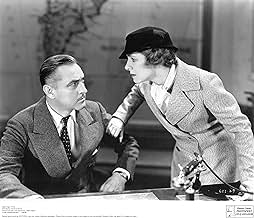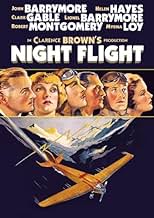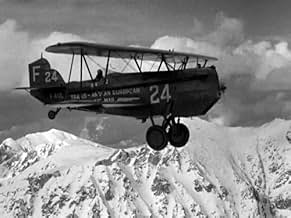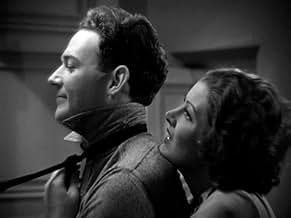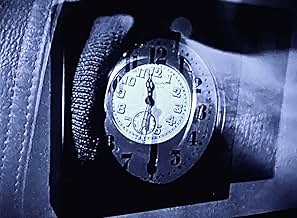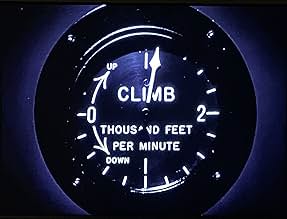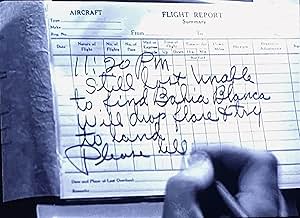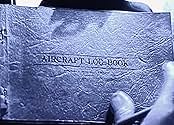Polio breaks out in Rio de Janeiro, the serum is in Santiago and there's only one way to get the medicine where it's desperately needed: flown in by daring pilots who risk the treacherous we... Read allPolio breaks out in Rio de Janeiro, the serum is in Santiago and there's only one way to get the medicine where it's desperately needed: flown in by daring pilots who risk the treacherous weather and forbidding peaks of the Andes.Polio breaks out in Rio de Janeiro, the serum is in Santiago and there's only one way to get the medicine where it's desperately needed: flown in by daring pilots who risk the treacherous weather and forbidding peaks of the Andes.
- Director
- Writers
- Stars
- Awards
- 4 wins total
- Nightclub Manager
- (uncredited)
- Director
- Writers
- All cast & crew
- Production, box office & more at IMDbPro
Featured reviews
The story is based on a novel written by Antoine St. Exupery and the plot is similar to what American aviator and writer Frank Wead wrote in Ceiling Zero. The location in Wead's play is strictly American whereas this film has a French aviation company located in South America.
If you read what I wrote about Ceiling Zero it did not transfer well to the screen. But having not been a play on Broadway Night Flight did not have that burden to overcome. The air scenes are much better done here and filled with romance. There is also a paucity of dialog in those air scenes, it was almost like a return to the silent screen.
Clark Gable and Robert Montgomery's roles for the big name stars they were at the time, are rather small. Gable barely speaks at all. Montgomery only has a couple of scenes, including one with Lionel Barrymore after a tough flight where they're partying. William Gargan has a bit more dialog with wife Myrna Loy. Helen Hayes is married to Gable, both women sit on pins and needles waiting for their men to come home.
John Barrymore is the martinet general manager of the air company who I think goes overboard. I do not believe an American company would for one minute tolerate his methods. Brother Lionel with qualms is the man in charge with enforcing John's strict edicts. The film is mostly carried by the brothers.
Night Flight wears better than Ceiling Zero, but not nearly as good as Only Angels Have Wings which has a similar location and plot. Night Flight goes overboard into the melodramatic, but still holds the interest. And the special effects with the air scenes are still breathtaking. The highlight of the film shows the tragedy that unfolds for one of the fliers and is done without words, but with a great music score by Herbert Stothart, MGM's house composer.
Delivery of mail for those of us who use it in these days of the personal computer is taken for granted. Back in the days before advances in navigation and safety, before instrument flying, taking to the skies could be dangerous, but it was romantic in those days. An American pilot named Charles Lindbergh got his start flying in planes just like the ones seen here delivering mail. This review is dedicated to all those brave pioneers of aviation that you see depicted here in a story written by one of them.
The film is strangely like a series of monologues or at best two shots. All of the characters and the drama are supposed to be tied together by John Barrymore, the hard driving managing director of the Trans Andean European AirMail. The original novel was based on St. Expury's experiences as a flyer, and later, a manager, with Aeropostale, the pioneering French Air Mail line later merged into Air France. Using Buenos Aries as a center, Aeropostale developed South American airoutes south to Patagonia, to the oil fields near Tierra del Fuego. The chief of station and one of Aeropostale's founders, Didier Daurat, (Riviere in the film) became legendary for his single minded drive to get the mail through, an early example of existential ethics. Another route was forged north across the River Plate and Uruguay to and through Paraguay to Bolivia and another, most spectacularly, across the Andes to Santiago, Chile.
Heros were produced which electrified France and the world. Mermoz pioneered the Dakar - Natal route across the South Atlantic as well as the Buenos Aries to Natal route. Henri Guillaumet flew across the Andes 396 times. The Andes were too high to be overflown even by the latest improved models used by Aeropostale and pilots had to fly their way around and through the mountains rather than over them, something which is shown in the film. For enthusiasts of vintage aviation the film is priceless with maybe three quarters of the flying done for real. John Barrymore unfortunately has begun his decline by the time this film was made and does his `eyebrow' thing to excess, signalling that he was either unhappy with his role or his domestic arrangements or both. Gable, just beginning his reign as the King of Hollywood, is almost unrecognizable in his pilot's outfit. Robert Montgomery manages to have scenes with the most co-stars in the picture, except for maybe John Barrymore. Helen Hayes is effective as the wife as far as that goes. Myrna Loy has a role usually described as `thankless'. Produced by David Selznick, it never appeared on his extensive resume and now can be seen as a very atypical Selznick project, beyond the accumulation of the talent. Undoubtedly the literary inclined Selznick was attracted to the book's having won the prestigious Prix Femina in 1931, though he was more sympathetic to period pieces (Dickens, GWTW) then contemporary drama. Perhaps he had been thinking of his associate at RKO (King Kong) , Air Corps pilot and airline executive Merian C. Cooper. Clarence Brown, who directed Garbo, was one of MGM's most romantic directors, always setting an atmosphere where love either triumphed or ended tragically. One wonders what would have happened if a more consciously `machine age' director like William Wellman or Howard Hawks had shaped the material.
The worst that might be said about NIGHT FLIGHT is to lament what might have been. Narrative techniques common today (and, ironically, during the silent era) would have rendered a more interesting film, though not one suitable for audiences of the time. In other words, a disappointment but not a terrible film by any means. The real curiosity is why it's never revived on Turner Classics which presumably owns both a print and the rights. I suspect that there may be a question as to the underlying rights to St. Expury's Vol de Nuit that might be responsible.
It's not too surprising that this story was taken from a novel by Antoine de Saint-Exupéry--the author of "The Little Prince". While "The Little Prince" seemingly has nothing to do with this film, it has a common thread--air travel, as there is a pilot who lands on the Prince's little planet. And, incidentally, the author was a pilot--and this would seem to explain his fascination with planes in these and other stories.
By the way, in the film you hear the term 'infantile paralysis'. This was another term for polio if you were wondering.
Best of the actors is Helen Hayes, followed by Robt. Montgomery and Clark Gable. The Barrymore brothers are on hand - I often feel like John Barrymore isn't trying but here he is adequate as the airport manager. There are several stories woven into the plot, the main thrust is about delivering badly needed serum to an Infantile Paralysis hospital in Rio de Janeiro (The picture takes place in South America).
So I said, C'mon - give credit where credit is due. The picture is 85 years old, only runs 84 minutes and is interesting and absorbing, keeping in mind this is pretty old stuff. Hence, my rating. Think you'll like it in spite of itself.
Helen Hayes, whose most famous film role as Madelon Claudet is no doubt destined to be ignominiously dumped onto DVD-R via the Warner Archive, has lots of screen time here as the wife of a pilot (Jules - played by Clark Gable) who is waiting on her husband to return from his first night flight for a late night celebration supper. As his arrival is delayed more and more throughout the night, so grows her panic.
The oddest thing here is the misuse - or should I say lack of use - of Clark Gable. Throughout the film he is stuck in a plane, mute and motionless. Except for a few log entries that he makes and some of his facial expressions we are really denied a performance here or for that matter, an idea of what is going through his mind.
I'd say it's worthwhile just because it's such an odd departure from what MGM generally did in the 1930's plus it's been locked in the vaults for 75 years due to rights problems. It's interesting to see how Warner Home Video has taken almost a film school approach to what they put out on DVD in the last couple of years. Practically all of their documentaries on film history wind up on pressed DVD, but some pretty entertaining precodes, noirs, and even more modern films such as "Don't Be Afraid of the Dark" wind up in the Warner Archive on DVD-R, a medium that doesn't usually have a life span greater than a couple of years.
Did you know
- TriviaIt was originally planned to show Clark Gable's character parachuting from his abandoned plane at an altitude of 25,000 feet. However, stuntman Ivan Unger, who was doubling for Gable, passed out at 20,000 feet due to lack of oxygen and the shot was never captured.
- GoofsAt about the 10-minute mark, the shadow of the Patagonia biplane (the one piloted by J. Fabian, played by Clark Gable) is shown over various parts of the pasture-lands of Argentina. The shadows cast over the horse and herd of cattle below are that of a biplane, but the shadow going over the flock of sheep is clearly that of a monoplane, not a biplane.
- Quotes
Wife of Brazilian Pilot: What's it all for? Just so somebody in Paris can get a postcard on Tuesday instead of Thursday?
- Crazy creditsDuring opening credits, the film title is done as "sky writing" by an airplane, and the plane is just finishing the last "T" on "flight".
- ConnectionsFeatured in Maltin on Movies: Super 8 (2011)
Details
- Runtime1 hour 24 minutes
- Color
- Aspect ratio
- 1.37 : 1
Contribute to this page


